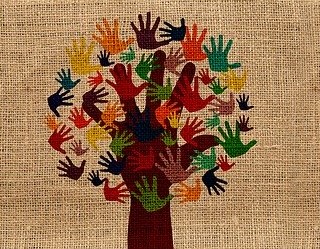Recently, we put a
question** out to the Institute participants and got dozens of interesting
answers. Using the analogy of an acorn,
we asked who or what has provided you with “nourishment, water and sunlight”
and how have you dealt with competition.
Part 1: Nourishment, Water and Sunlight
Constant support and encouragement is especially important for entrepreneurs because, as one woman put it, “to be honest, it is quite a lonely road”. When writing about their core source of encouragement, family was mentioned more than any other source. Some talked about spouses, others mentioned children, grandchildren and grandparents. As one woman put it “they are my motivational engine.” In addition to inspiration, family also provided practical help, helping with childcare and other responsibilities in response to what one respondent called the “unorthodox schedule” associated with running your own business. Another woman mentioned that her sister helped her with “education and wardrobe.”
Friends also figured heavily in the responses, especially those who are also entrepreneurs, which one woman called her “business besties.” Previous bosses and co-workers were mentioned as sources of “water and sunlight.” Many of the business friendships grew out of participation in programs like “Tide Risers” and other networking groups. Finding support in the voices and actions of other women was commonly mentioned. As one woman put it, “there is so much beauty and power in women coming together to uplift and inspire one another,” as a means to deal with self-doubt and discouragement.
Although most mentioned some source of inspiration as an ongoing “pull” to entrepreneurship, others felt pushed into it. For example, one woman mentioned the “abject reality” that her previous job would not continue, and others mentioned the paucity of other job opportunities. In these cases, it was the economic reality that provided the push. Still, once they “made the choice to go forward believing” in themselves, there were still forces that helped them grow and survive.
There were sources mentioned that may help you think about additional places to find support for your entrepreneurial “acorn” to grow and thrive: business coaches and mentors, non-profit groups supporting women, personal boards of directors, incubator programs (Chobani Food Incubator was mentioned specifically), social media influencers, role models (e.g., Oprah), Small Business Development Centers (SBDCs), SCORE. Another woman mentioned the work of Barbara Stewart Smith and her work on “rich thinking.”
Help can also be found in unexpected places from people who are strangers. One particular impactful story was relayed about an entrepreneur who was roaming the Internet to find help and stumbled across a website for a similar product. When she reached out to the (female) founder, she ended up getting an 8-hour training session which “literally recharged my battery.”
Finally it is worth mentioning that many individuals found that, like an acorn, they carried some “nutrition” from within, citing their individual motivation, belief in the mission of the business, their personal faith, and their self-care and healing activities, providing the “vigor” needed to push forward. Many mentioned the need for ongoing self awareness, noting things like vision boards and other activities to help stay focused to meet the “fiercest winds of adversity” and to “keep check on ego and emotions.” Personal savings provided help, as did a well of self-confidence and “knowing you can push through any challenge or endeavor.” Also mentioned was the need to be honest when you see things are not working and you need the courage to pull the plug. One woman wrote “facing the truth was my water.” Echoing this thought another said, “Not all of your ‘acorns’ are going to make it, but they’ll all make you stronger and wiser, if you allow it.”
What did these sources of sunshine and nourishment provide? Of course, financial resources were mentioned many times. But equally important was moral support, especially from those who can see the best in the person and help to “stop the negative chatter” and encourage a positive mindset. Valuable information and knowledge from mentors, was also mentioned, along with the advice that helped protect the entrepreneurs from bad choices, bad partnerships or from pursuing the wrong customers.
Part 2: Handling Competition
When it came to competition, it was often mentioned that there is “room enough for everyone to eat” so competitive forces were not too worrisome. More than one respondent mentioned that they were not in a “scarcity market” and that they prefer to focus on their own unique offerings. “Nobody can be me,” as one woman put it. Others felt more pressure from the competitive landscape and used a variety of tactics to differentiate themselves and their business, such as: focusing on a specific niche, finding a powerful partner, thinking like a “specialist vs. a generalist,” creating a high level of service, offering customization and staying focused on the mission. One interesting example of niche marketing came from someone who is actually in the “water and sunlight business,” working on solar water pumping systems for purification, with a specific outreach focus on women, who are the first adversely affected in a crisis involving water shortage. She mentioned that her competitive advantage was doing customer discovery to understand “what works and doesn’t work specifically for women in the marketplace.”
Other things that were mentioned as helpful in dealing with competition included: a willingness to learn and grow from others, understanding strategic marketing, maintaining an attitude of gratefulness, positivity and patience, keeping a focus on people (especially the customer), remaining nimble and flexible. One response that interested us was an entrepreneur who said she has a “bless-and-release mantra” when it came to losing a customer. She felt that when she lost out to a competitor, perhaps that meant it was not the right customer after all. Using a “bless and release” approach she avoids wasting time on regrets and stays focused on future opportunities. This was echoed in a comment that you must “know what you control and what you don’t.” Similar advice was to “stop paying attention to others and focus on differentiation.”
There were two very interesting extensions of the acorn metaphor. One said “too few people focus on the acorn, a lot of people are focused on the tree.” She sees the tree as the business model, investment and brand, while the seed is the “inner leadership and capabilities of the individual.” If you can figure out what kind of seed you have, she argues, you’ll be able to find the right conditions under which you will flourish. “People first need to know what seed they are.”
Another woman shared some wisdom she heard from a fellow mother: “Shed yourself like a maple tree in autumn, in the colors of your life to rival the colors of the rainbow. Share your time, talent and treasure to bring meaning to lives, knowing that you have brought to bear so many positive fruits that will nourish mind, body and soul.”
Thanks to everyone for shedding your wisdom on our community!
** Question: As many of you know, Cornell University is located in Upstate New York. Fall is a stunning time here with all the leaves changing color – but it is also the time when thousands and thousands of acorns fall out of the oak trees and litter the ground. Only a very few of those thousands of acorns will ever grow into mature oak trees. To become a tree, the acorn has to escape being eaten, be buried deep in the ground by an animal, and then get enough water and fertile soil to grow above the ground to sunlight. Even then, the tree will face competition from other plants and many threats of nature to its survival. Only a few will make the full journey. What do acorns have to do with entrepreneurship? Well, millions of people have ideas, but only some (like you!!!) actually take the steps to launch a business. The questions that we would like to know more about are: 1) Who or what has provided you with the metaphorical nourishment, water and sunlight to push through and start your venture? (or begin the work needed to start your venture) 2) How have you survived the competitive threats? (or how do you hope to survive them?)








